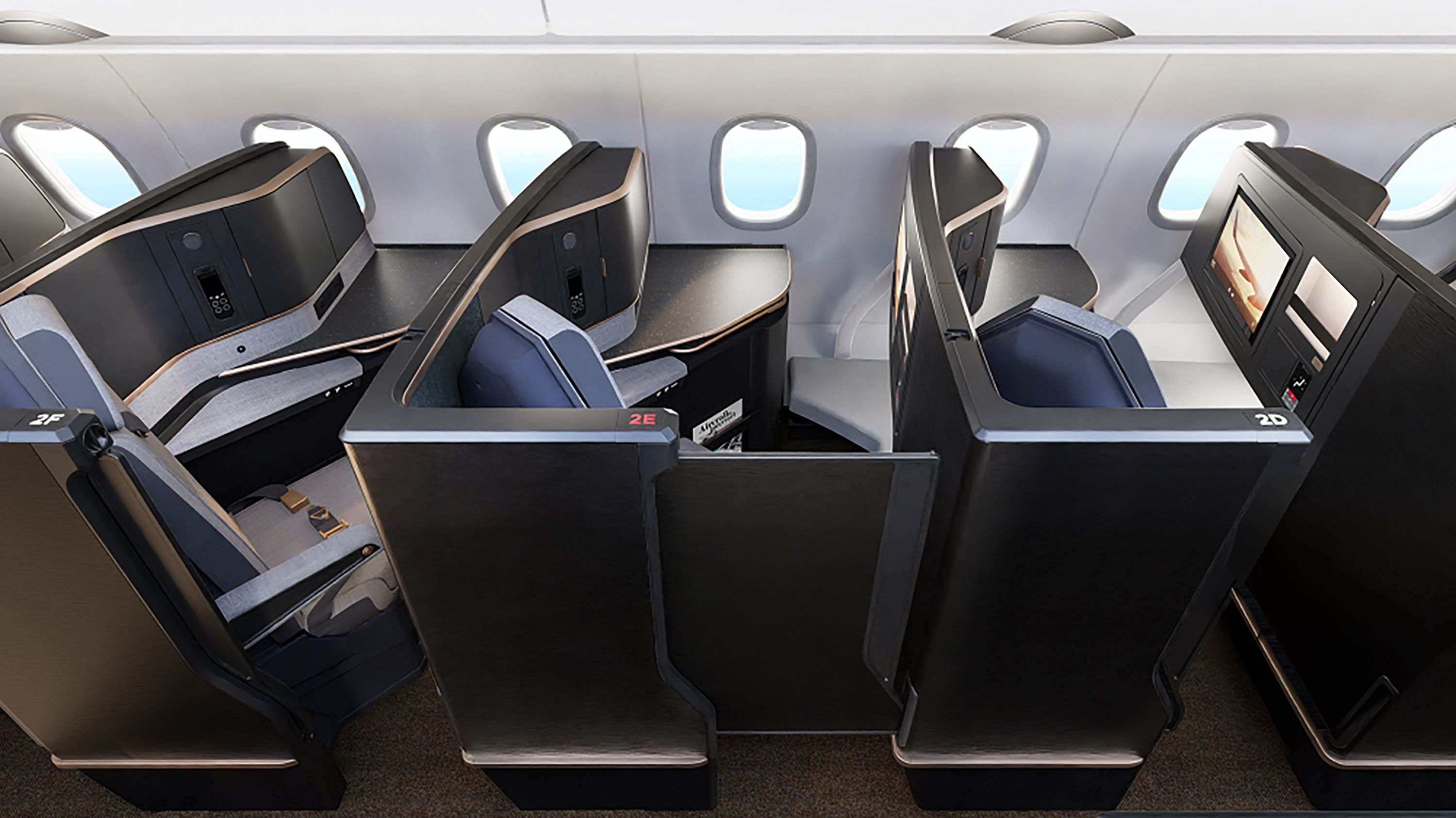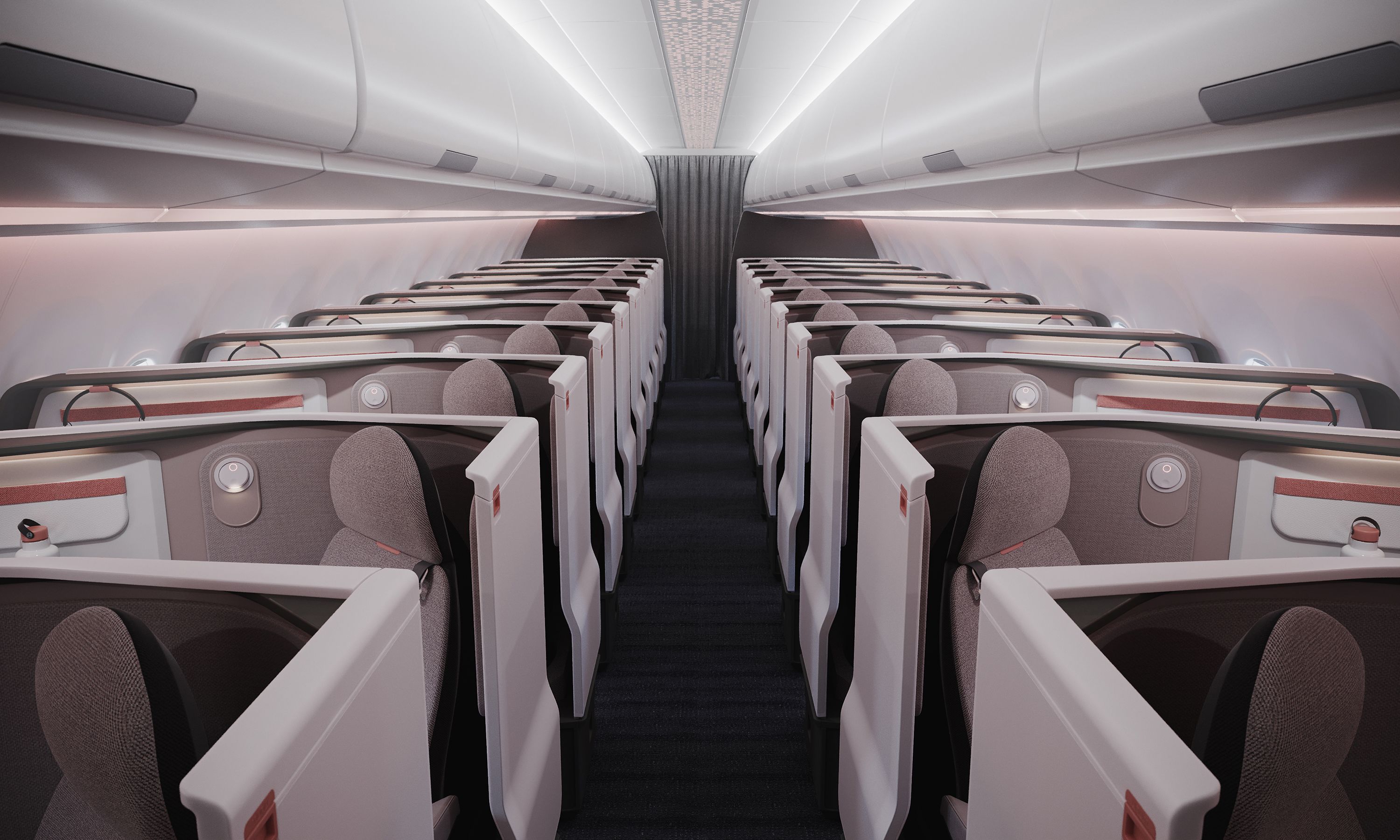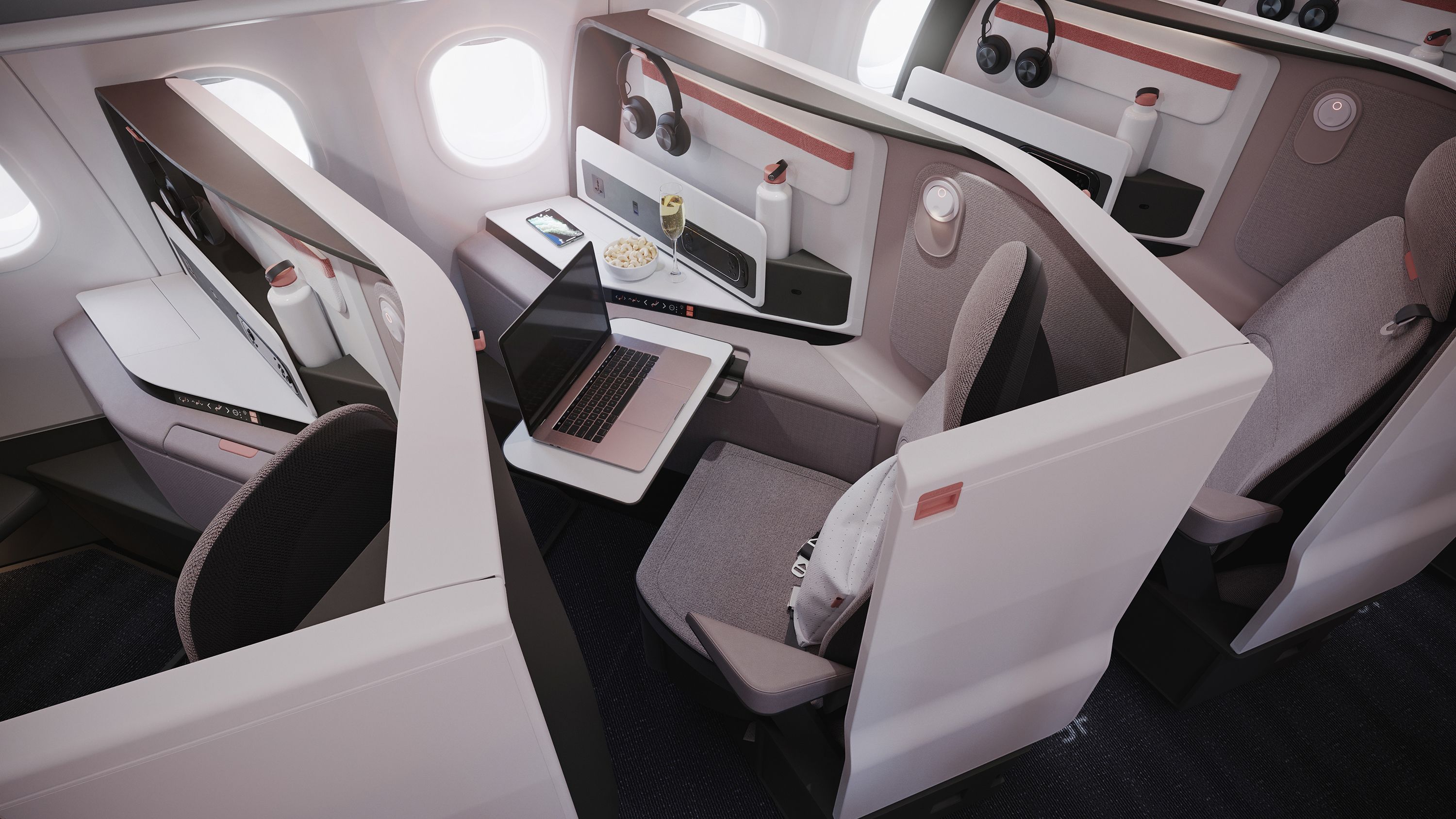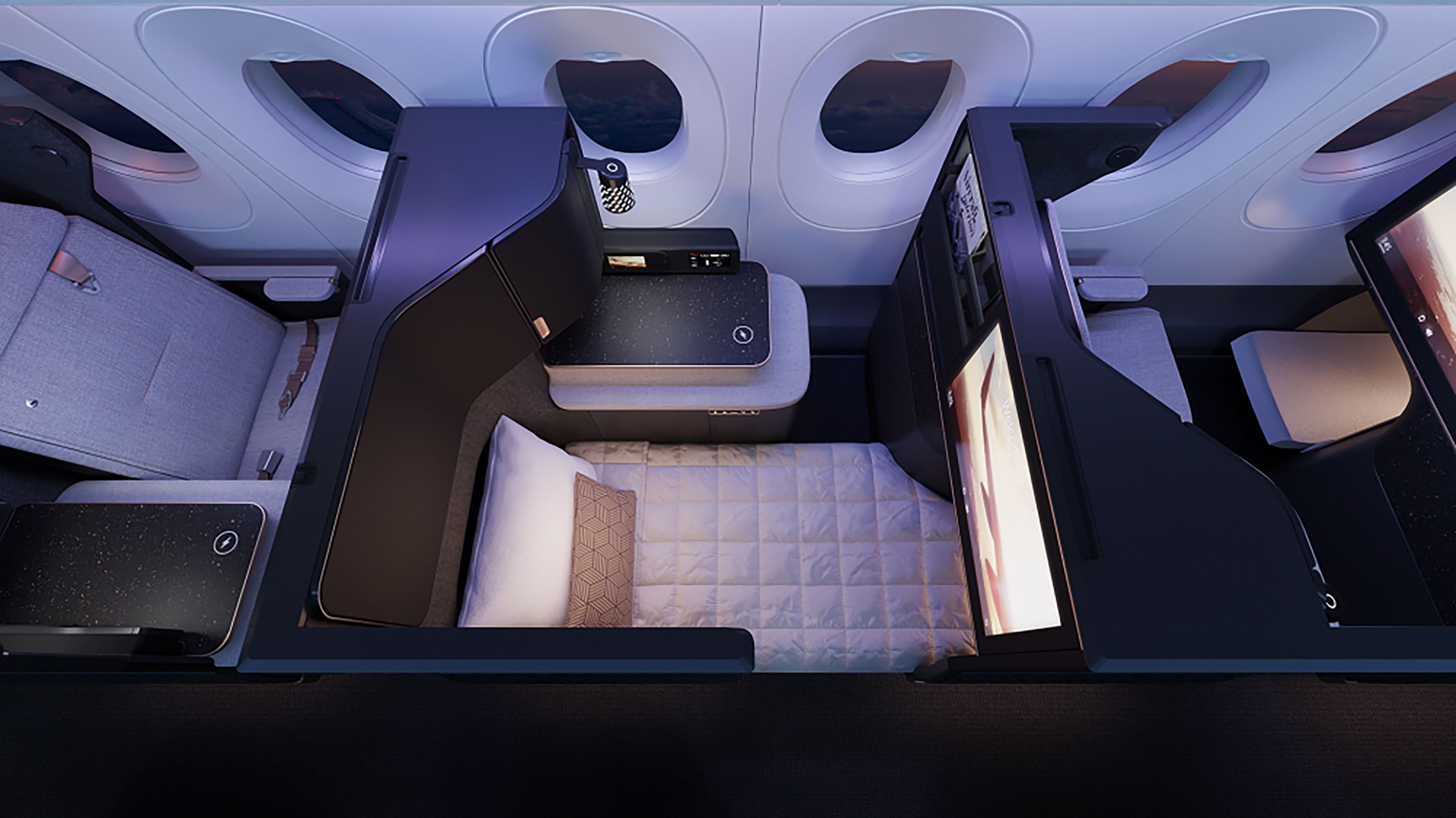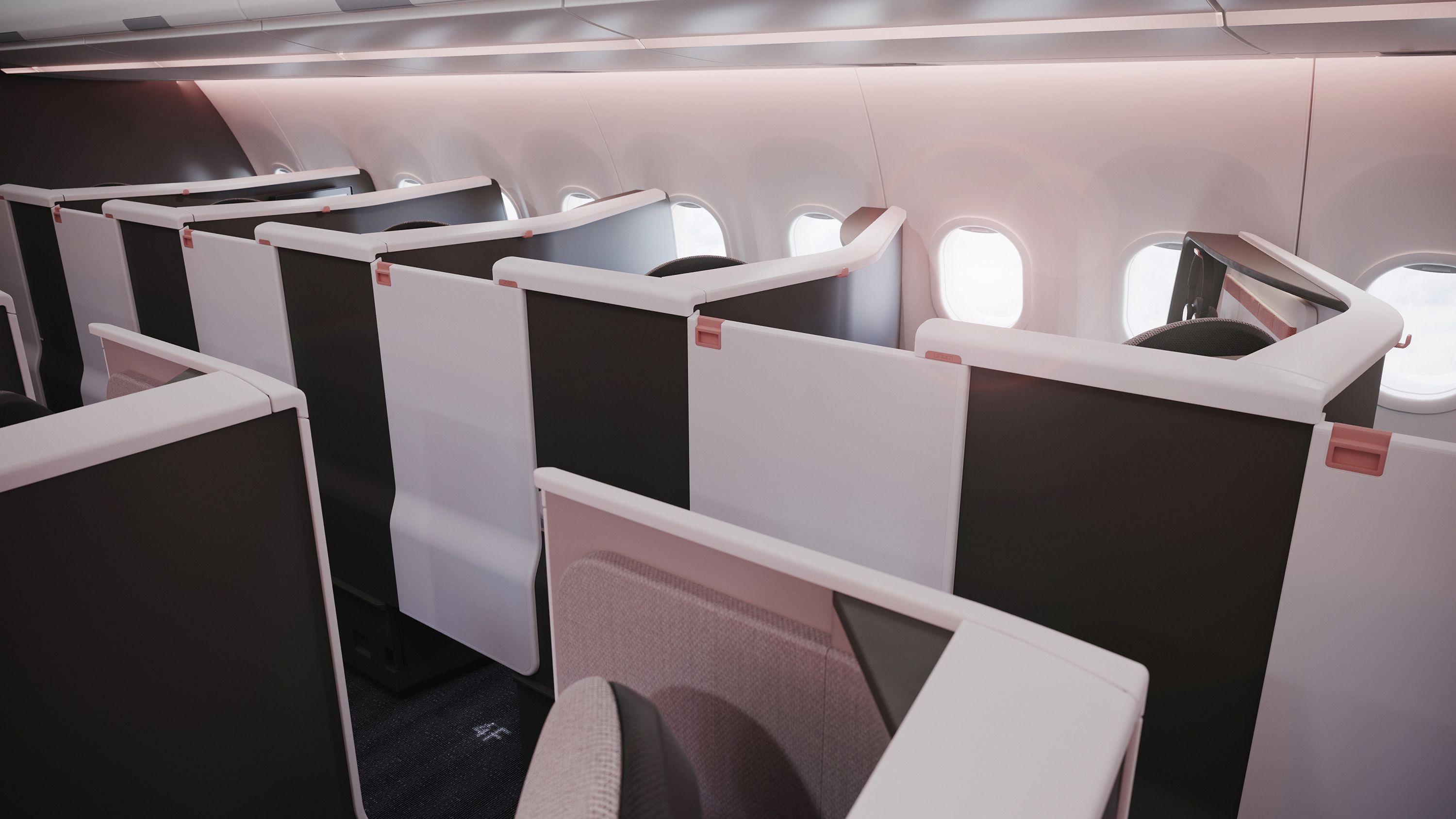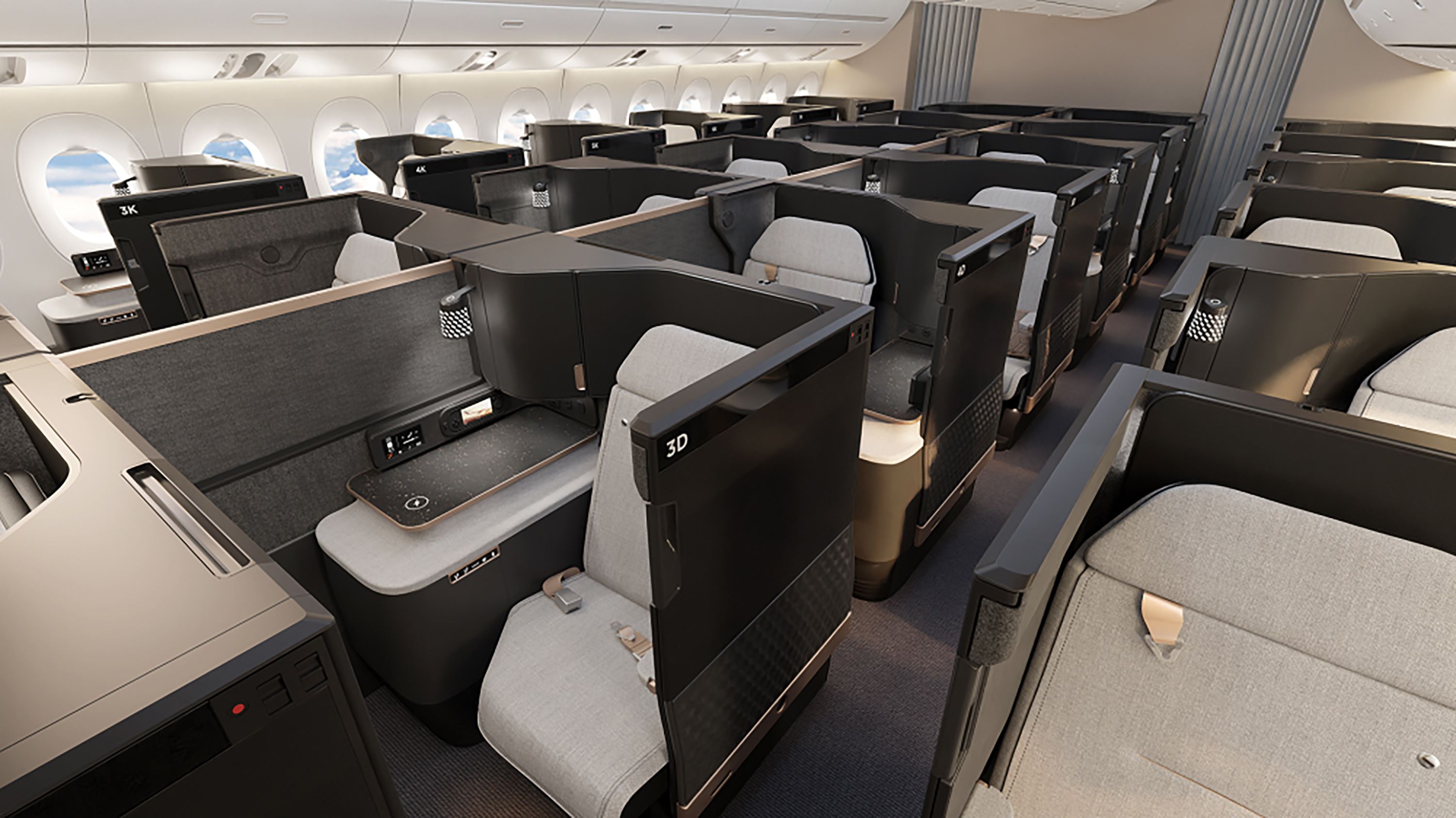Business class is becoming increasingly more luxurious, spacious and private. Whether it’s custom-designed seat and bed cushions, bespoke fittings and fixtures, or co-branding with some of the biggest names in luxury, business really is the new first class aboard many planes.
That’s especially true in business class mini-suites with doors, which debuted nearly 10 years ago aboard JetBlue’s Mint premium airplanes, and are now found on a dozen or so carriers including Delta, All Nippon Airways, British Airways and China Eastern, with more rolling out every year.
Doors make the business class experience better in two ways: first, they add privacy, and second, they avoid what airplane seat designers call the “brush past,” where a passenger or crew member walking down the aisle bumps into a seated passenger.
If you’ve traveled in business class, you might already be thinking of some of the seats where that would be particularly beneficial.
One might be the several kinds of staggered layouts where some seats are right next to the aisle, but others are well away from the aisle, on the other side of a little console table. Another might be the angled herringbone layout where seats face into the aisle and you end up having to avoid eye contact with the person opposite for the whole flight.
Privacy shells
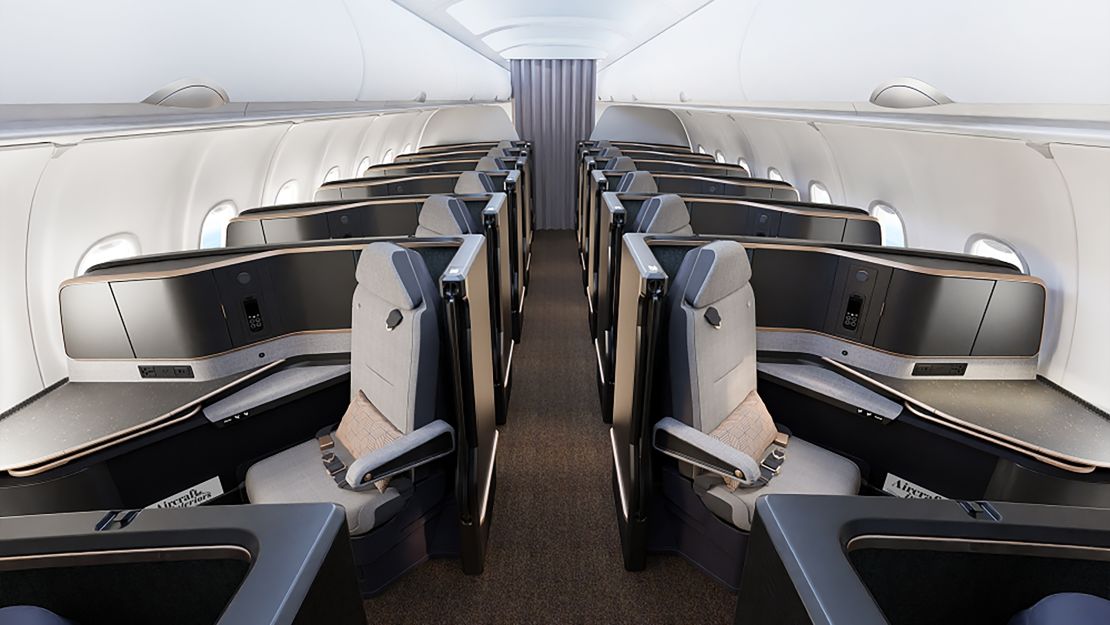
Doors obviously help to avoid that. But while these mini-suites with doors are more private than many first class seats, the word “mini” is in their name for a reason: the space for each passenger is, while massive compared with economy, still smaller than first class.
Adding an inch or two to incorporate a door can really impact the amount of space that’s available for your seat.
That sure is a nice problem to have, you and I might think from our 17-inch-narrow seat in row 54, but every fraction of an inch of the cabin’s width is used, and on some medium-sized planes like the Boeing 767 or 787 and the Airbus A330 or A330neo, that can make a real difference to how spacious a seat feels.
So why do airlines choose doors, even on some of those medium-sized planes?
“There is undoubtedly a movement towards increased privacy on aircraft, flowing down from first class where the Emirates full height suite set a new standard, into business class,” Collins Aerospace’s vice president of aircraft seating sales and marketing, Alastair Hamilton, tells CNN.
“Most business class seats have had privacy shells for a number of years now, which take other passengers out of your eye line when everyone is seated. The addition of doors further enhances this sense of seclusion, closing you off the aisle, especially when lying flat in the bed position.
“So are doors necessary? Obviously not. But they are a passenger benefit which improves privacy and critically, rest and sleep on a long flight.”
Weight and space vs. revenue

Hamilton adds that doors might add cost, weight and complexity to a seat, but can bring in more revenue.
“From a passenger perspective, the ability to close the door and have ‘my space’ will always be perceived as a benefit,” he says. “The more the aisle is in the eye line the greater that benefit, particularly as the passenger sleeps. Airlines are trending towards doors and increased privacy generally as they continue to enhance the passenger experience.”
Some airlines are saying no.
Quentin Munier, executive vice president for strategy and innovation at Safran Seats tells CNN that demand for doors will often be on a case-by-case basis, depending on comfort requirements or seat layout.
Nevertheless, Munier’s colleague Jean-Christophe Gaudeau, vice president of marketing, says demand seems to be increasing.
“Doors have been out for a few years now, and year after year we have seen a constant rise of the share of airlines asking for doors in our surveys or in actual requests for quotations – up to a point where a large majority of airlines are now asking for it.
“The question is increasingly going to be less about whether or not to have a door but more about how to deliver in a smart and effective manner.”
The question will also be about whether non-door options can meet the need for privacy as well as saving on weight and space.
Safran has an option that is essentially like a thick, horizontal, magnetically attached, spring-loaded roller blind that stretches across the door space. Other options include a curtain like Air France uses in its first class seats, dividers that expand and retract like a hand fan, or slide-out panels that don’t entirely replicate the door but do add substantial privacy.
Time to go?
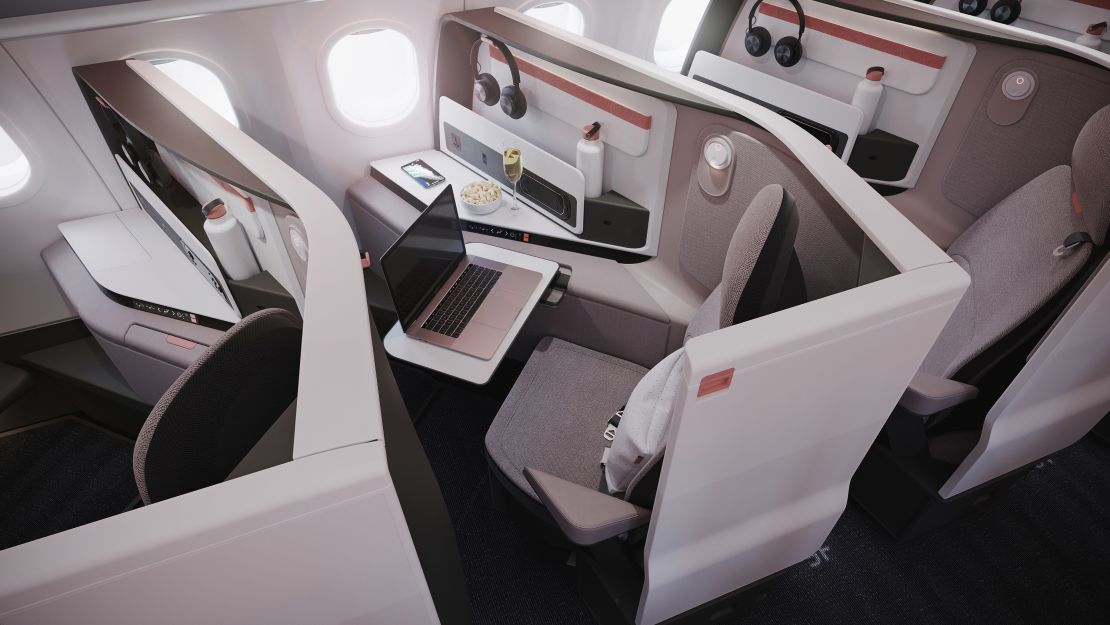
All of these have tradeoffs, which is why Chris Brady, an industry veteran and the founder of start-up seat maker Unum, says that airlines are divided on the issue.
“All recognize that doors are heavy and complex… with lots of hidden complexity due to the certification requirements,” Brady says.
“I think it’s fair to say that doors can enhance the passenger experience, but for outboard-facing herringbone at 40-ish degrees plus, where you face away from the aisle, the contribution is marginal.”
That kind of seat, at such a large angle away from the aisle on a single-aisle aircraft like the Boeing 737 or Airbus A320 aircraft families, is what Unum is creating as its first seat, alongside other seat makers both start up and established.
“I’m a bit conflicted,” Brady admits. “As a passenger I like a door. I find flying a wonderfully insular experience and revel in being alone, and a door helps. As a citizen I know they’re heavy,” which also means more carbon emissions.
He adds, doors, “in my personal view should be avoided on the basis that perfection is achieved not when there’s nothing left to add, but when there’s nothing left to take away.”
The door question will continue as more airlines and more seat makers weigh up the benefits.
But, says Brady, “a brave airline can and should delete them.”
